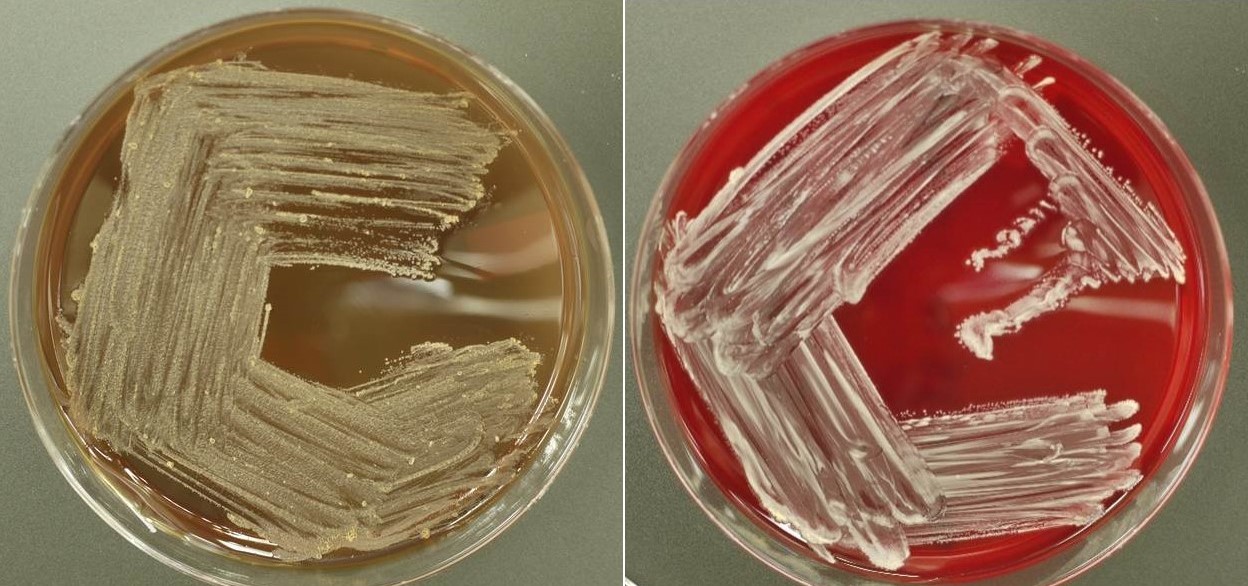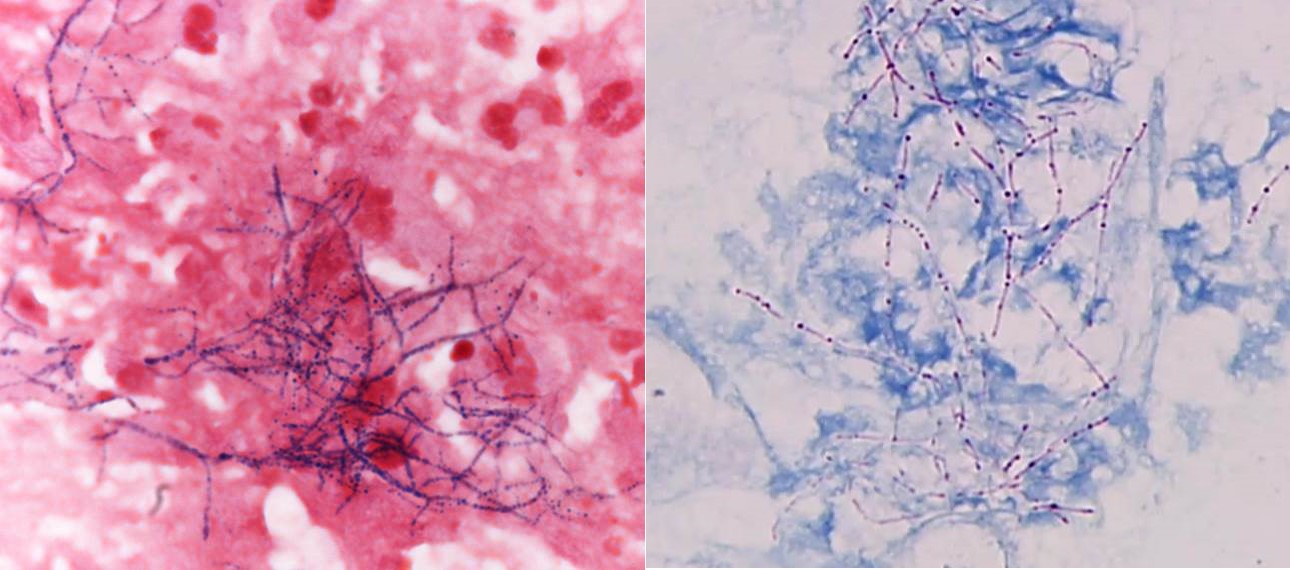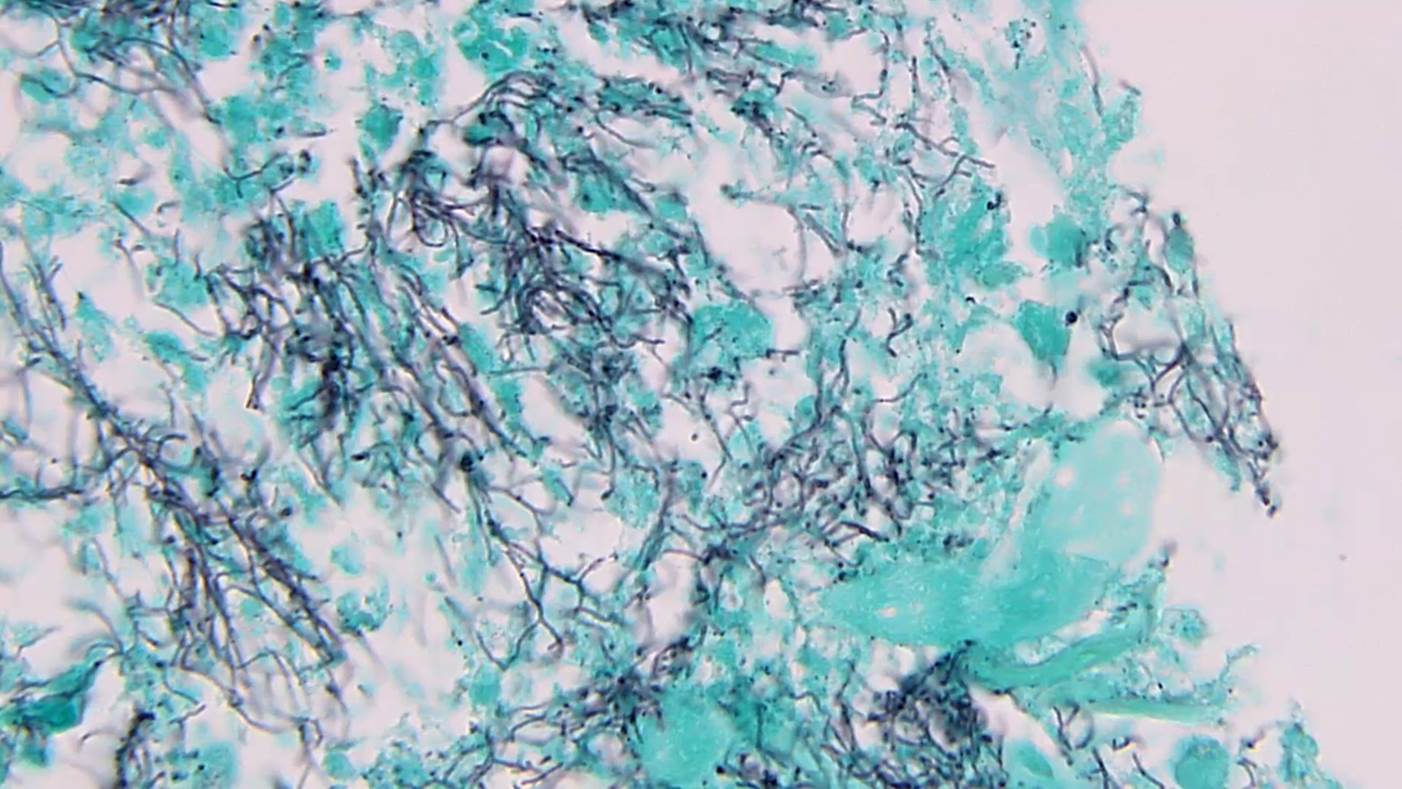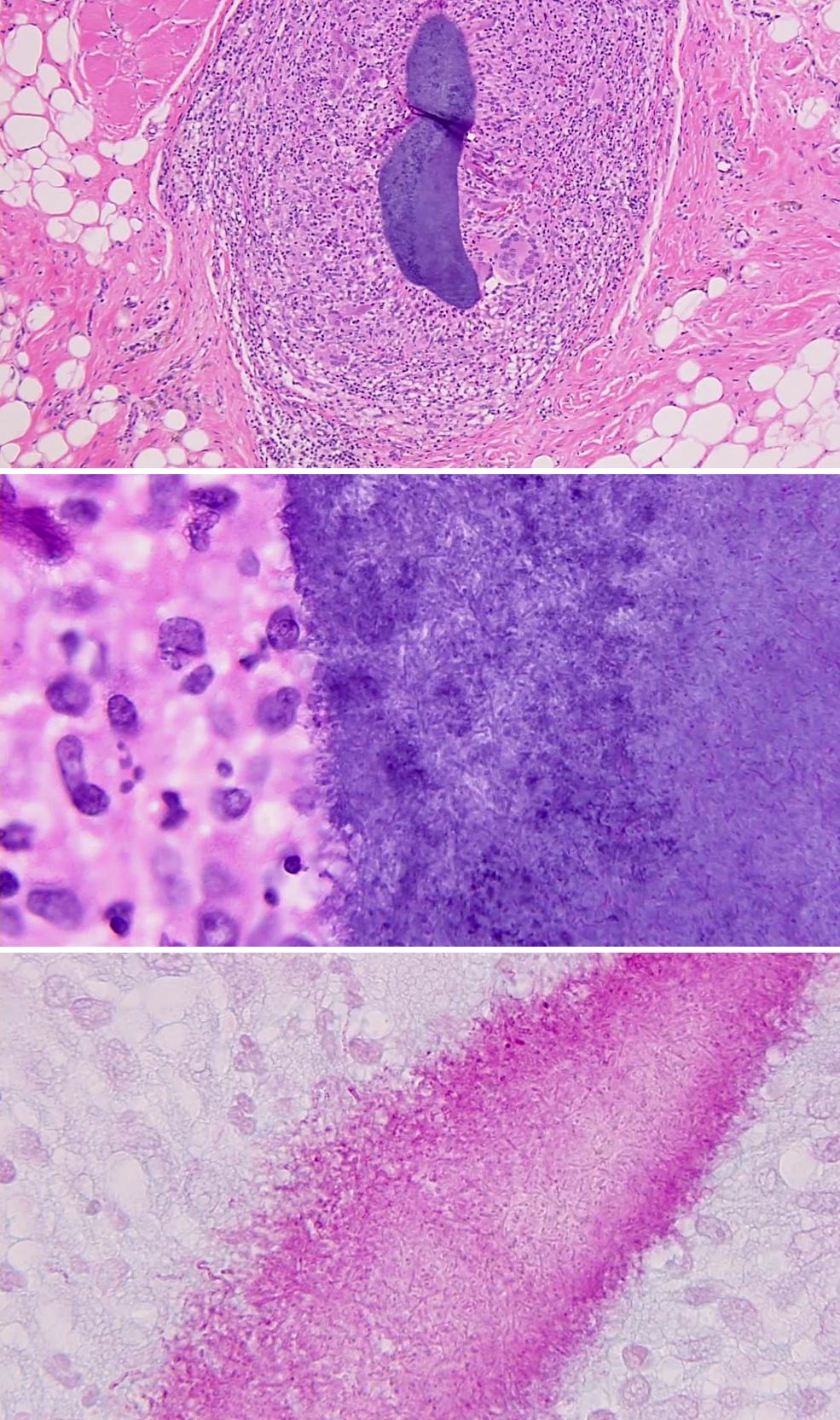Table of Contents
Definition / general | Essential features | Epidemiology | Sites | Pathophysiology | Clinical features | Laboratory | Case reports | Treatment | Clinical images | Microscopic (histologic) description | Microscopic (histologic) images | Molecular and mass spectrometry techniques | Differential diagnosis | Additional references | Board review style question #1 | Board review style answer #1 | Board review style question #2 | Board review style answer #2Cite this page: Larsen N, Farr GA, Leal SM. Nocardia. PathologyOutlines.com website. https://www.pathologyoutlines.com/topic/microbiologynocardia.html. Accessed May 13th, 2024.
Definition / general
- Gram positive genus containing over 50 species
- Taxonomy: order Actinomycetales, family Nocardiaceae
- Common species:
- N. asteroides
- N. farcinica
- N. brasiliensis
- N. asteroides
Essential features
- Gram positive, catalase positive bacilli with thin filamentous branching, often with a beaded appearance
- Microbiology: negative on Ziehl-Neelsen and Kinyoun staining; positive on modified AFB stain
- Histopathology: AFB stain negative; Fite stain positive
- Diseases range from cutaneous infection to severe pulmonary or central nervous system disease (Int J Infect Dis 2020;90:161)
- Disseminated disease has poor prognosis
Epidemiology
- Ubiquitous saprophytes; present in soil
- Immunocompromised patients at higher risk
- N. asteroides and N. farcinica more widespread in the United States; N. brasiliensis favors Southwestern or Southeastern United States (Clin Microbiol Rev 2006;19:259)
Sites
- Immunocompromised host
- Lung / pneumonia (Int J Infect Dis 2020;90:161)
- Brain abscesses
- Hematogenous spread
- Skin involvement
- Immunocompetent hosts (N. brasiliensis)
- Lung / pneumonia (Int J Infect Dis 2020;90:161)
- Lymphocutaneous infection (sporotrichoid lesion)
- Mycetoma
Pathophysiology
- Virulence factors include filamentous growth, mycolic acid, catalases and superoxide dismutases
Clinical features
- Most commonly transmitted via inhalation from environmental sources
- Traumatic inoculation possible from environmental sources
- Hospital acquired infections due to contaminated equipment or post surgical wounds (Centers for Disease Control: How is Nocardiosis Spread? [Accessed 10 August 2020])
- Pulmonary disease can be subacute and indolent, symptoms may be present for weeks (Clin Microbiol Rev 2006;19:259)
- Cough with or without thick, purulent sputum
- Chest Xray infiltrates, nodules, cavitation
- CNS disease presents with brain abscess and signs of increased intracranial pressure
- More common in immunocompromised patients (BMC Infect Dis 2020;20:56)
- Skin disease: granules may be present and should be examined microscopically
- Also seen with Actinomyces; modified AFB stain / Fite stain is helpful
- May present similarly to other mycobacterial diseases with fever, weight loss and malaise
- Environmental source (soil); not considered communicable
Laboratory
- Aerobic growth on sheep blood and chocolate agar
- Optimal growth on charcoal buffered yeast extract at 35 ± 2°C
- Biochemical methods unable to differentiate between clinically relevant species
- Dry, crinkly colonies at 48 - 72 hours, may take up to 14 days; not ideal for timely identification
- Variable colony morphology (Clin Microbiol Rev 2006;19:259):
- N. farcinica turns orange with age
- N. brasiliensis has yellow discoloration
- N. asteroides type VI produces brown pigment
- Species level identification via MALDI-TOF mass spectrometry or sequencing is most timely and accurate technique for identification
- If MALDI-TOF is not available, make presumptive diagnosis and send to reference lab
- CLSI M62 document provides susceptibility testing breakpoints (CLSI: M62 - Mycobacteria Susceptibility Testing Standards [Accessed 10 August 2020])
Case reports
- 40 year old man with AIDS and rare N. abscessus infection (BMJ Case Rep 2016;2016:bcr2016215649)
- 41 year old man with Nocardia farcinica infection mimicking pulmonary neoplasm, pneumonia, SVC syndrome and pericarditis (Thorax 1997;52:492)
- 45 year old man with history of kidney transplant and disseminated Nocardia infection (Transpl Infect Dis 2011;13:385)
- 52 year old chalk miner with chronic meningitis due to Nocardia farcinica (BMC Infect Dis 2020;20:56)
- 67 year old man with Nocardia cerebral abscess mimicking a high grade tumor (J Clin Neurosci 2010;17:1080)
Treatment
- Empiric therapy often includes high dose sulfamethoxazole with trimethoprim (TMP-SMX) and amikacin, ceftriaxone or imipenem
- Variable resistance patterns necessitate organism identification and susceptibility testing
Clinical images
Microscopic (histologic) description
- Thin filamentous branching rods with a gram positive beaded appearance
- Fite and Gomori methenamine silver (GMS) stain positive
- Width: 1 - 2 μm; length variable
- Host response; acute inflammation or pyogranulomatous
Microscopic (histologic) images
Molecular and mass spectrometry techniques
- 16S highly sensitive and specific for species level identification and antimicrobial susceptibility (New Microbes New Infect 2017;19:96)
- rrs gene used as reference but does not have enough polymorphisms to differentiate at species level
- secA1 gene, part of protein translocase complex, was a novel target but still not perfect identification at species level
- sodA gene, encoding for superoxide dismutase, has variable regions that allow discrimination of closely related species (New Microbes New Infect 2017;19:96)
- Next generation sequencing has good diagnostic value, decreased turnaround time and can aid with clinical decision making (Front Cell Infect Microbiol 2020;10:13)
- No need for target specific primers, advantage over Sanger sequencing
- MALDI-TOF generates mass spectra based on whole cell material or extracted intracellular content matched to known database references (Front Microbiol 2018;9:1294)
- Bruker Daltonics and Vitek MS are most commonly used databases
Differential diagnosis
- Mimics filamentous Actinomyces bacteria
- Nocardia is aerobic not anaerobic and modified acid fast positive
- Indolent pulmonary disease mimics
- Mycobacterium tuberculosis
- Mold infection
- Malignancy
- Brain abscess mimics
- Mold
- Toxoplasma
- Malignancy
Additional references
Board review style question #1
- A 56 year old man presents to the emergency department with weight loss and a thick, productive cough. He has a past medical history of nonalcoholic steatohepatitis (NASH) cirrhosis and a liver transplant 2 years ago. A sputum culture Gram stain shows Gram positive filamentous bacteria. Which stain is helpful for distinguishing the 2 major genera of filamentous bacteria?
- GMS
- Gram stain
- Modified Kinyoun
- Ziehl-Neelsen
Board review style answer #1
C. Modified Kinyoun. Nocardia species have a thin layer of mycolic acid which retains the carbol fuchsin dye when using a weaker acid for decolorization (i.e. modified acid fast stain). This feature helps distinguish from other filamentous bacteria that stain negative with this procedure.
Comment Here
Reference: Nocardia
Comment Here
Reference: Nocardia
Board review style question #2
- A patient from Kenya presented with a chronic subcutaneous lesion in the right foot with significant swelling, fistula formation and purulence. On examination, a granule was expressed from this lesion and sent to microbiology. Half of the sample was crushed between 2 slides and stained, the other half submitted for culture. A Gram stain of the slide revealed filamentous structures with a diameter of 5 μm. Which culture conditions are optimal to isolate the likely etiologic agent?
- BCYE agar under aerobic conditions
- Blood plate under microaerophilic conditions
- CDC anaerobic agar under anaerobic conditions
- Fungal culture media under aerobic conditions
Board review style answer #2
D. Fungal culture media under aerobic conditions. Filamentous bacteria are 1 - 2 μm in diameter whereas fungal hyphae are 4 - 15 μm thick. Size differences are the key to making this distinction with significant implications on treatment and patient outcome.
Comment Here
Reference: Nocardia
Comment Here
Reference: Nocardia







